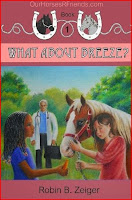Introduction
There are
many ways to think: Well, let’s see, there is critical, creative, lateral,
strategic, divergent, and…... There are thousands of papers and books
written on the subject, and assessments, of every ilk, measuring how we think.
Yet, parents, teachers and caregivers are most-often left without a clear
direction on how best to bolster thinking in our young people. This post is
based on excerpts from two publications I authored a number of years ago: The
Nurturing Classroom and a chapter entitled Cognition
and Cooperation: partners in Excellence which can be found in If Minds Matter a Forward to the Future
It is my
hope that this post will help parents and teachers separate the wheat from the
chaff and make the task of teaching thinking an everyday adventure.
FRAME OF
REFERENCE
For sure,
we need a reference point, usually referred to as frame of reference, to
assimilate new information. If we don’t have a reference point on which to
connect the new information, It just sits there or disappears from the thinking
field altogether.
For new
information to become relevant we must be able to either link it to past
experience or construct new meaning. Each time we are exposed to a new way to
think about something, we add another strategy or path to our thinking abilities.
If there is nothing in our past experience OR if we are unable to construct new
meaning, we will not be able to make sense of the information.
As parents,
teachers, and caregivers we can create an environment that promotes the
development of more and more thinking paths. If we tell young people the why’s
and elaborate on some of the how’s rather
than just telling them what to do, we help them develop new paths of thinking.
FOR
EXAMPLE: in the classroom
If we tell
students one of the class standards is that only
one person can speak at a time, they will understand the rule and not much
more. This is particularly true for the child who comes from a family where two
or more people often talk simultaneously. While we make no value judgment on
what happens at home, we can offer other choices for students to consider. The
teacher can explain: When two students speak at the same time, it is impossible
to hear everything each student says. When only one person speaks at a time,
everyone can hear the speaker and will know what each person is thinking. Seems
obvious? Not to all students.
FOR
EXAMPLE: in the home
Parenting
Style #1
Assume that
it is winter and Rob, an eight year old child, does not close the door
completely upon entering the house. Rob may be told: Rob, close the door. To a young child this is just another command
to obey or get into some kind of trouble. Parent #1’s preferred form of
communication is direct commands.
Parenting
Style #2
If the
parent explains: Rob, close the door cold
air is coming in, then Rob begins to make the mental connection- if the
door is open cold air is getting in the house
Parenting
Style #3
If the
parent elaborates even further: Close the
door, cold air is coming in. When this happens the house will get cold causing
the heater to come on frequently. If this happens too often, the heating bill
will be so high we will not have any money to take our vacation trip to
Disneyland.
Rob is
learning about cause and effect, which is a critical element in problem
solving. Some might say this is common sense. Consider the fact that Rob may
not have the opportunity to learn common sense if his life is filled with direct
commands.
In each of
these instances the stimulus is identical. The parent’s response is the
critical factor in determining the child’s cognitive growth pattern. In other
words, if a child is living in a command-only household, where the reasons
behind a given action are never explained, he may be living in the context of
Benjamin Bloom's Taxonomy Level 1—Just the facts.
Obviously,
it is not appropriate for parents to always give detailed responses. However,
if elaboration persists over time a child’s memory bank will be filled with
options. Frames of reference will abound. When presented with new information
they will have a much better chance to make sense of what comes their way.
You are welcome to make comments and join the conversation.
Jacquie
Resources:







































